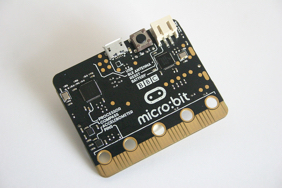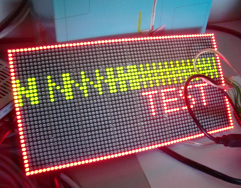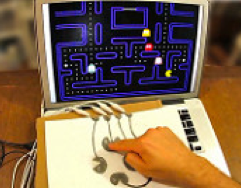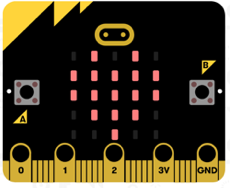Run a creative making workshop for young people
Intro
Sometimes, with the emphasis on STEM education, the potential for creativity in making gets a bit lost in the mix.
This outline is for a small group workshop with children/families (ages 8+) that focuses on creativity and active learning while introducing learners to creative computing, basic circuits and even some computational thinking concepts by stealth.
During the workshop, learners are introduced to programming with Scratch, Makey Makey and basic circuit creation. They are then able to work on their own project (in pairs or with parents) using the materials and the software and hardware devices available.
What you need
- Computers with Scratch (installed or via the browser version).
- Printed guides (or presentation slides if projector is available) with example projects and tasks.
- Makey Makeys
- LittleBits kit or Paper Circuits or other introductory circuit examples
- A range of different conductive materials (e.g. conductive dough, graphite pencils, fruit, foil)
- Paper
How
Part 1 - Introduction to Scratch
- Introduce Scratch and block programming, including the drag and drop interface and code scripts.
- The first task is getting everyone up and running with Scratch. This can involve creating new accounts if you’re using the online version. Once everyone is able to access Scratch, you can introduce the Scratch editor by starting with a basic project. Some possible starter projects are listed in the guide.
- Demonstrate the different parts of the editor, such as the blocks palette, sprites and stages. Show users how to connect a basic script together using different blocks and how blocks can be removed by being dragged back to the block palette.
- Talk about the option to remix shared projects and how these can be used as a basis of your own creations.
The guide has some suggested initial projects but learners can also be encouraged to create or remix a project of their choosing. This can be an interactive story, a game or anything else that appeals to them.
If you have a mixture of new Scratch users and more experienced users, you can user different starter projects.
Part 2 - Circuits, inputs and outputs
Demonstrate a basic circuit using LittleBits or Paper Circuits and discuss the different parts and how the circuit works.
Ask learners to identify what the input and output is for their computer, tablet or other devices available.
This is also a good time to introduce the concept of conductivity.
Part 3 - Introduction to Makey Makey
- Introduce the Makey Makey and how it can be used to create touchpads to use with their computer.
- Demonstrate some basic Makey Makey examples using different conductive materials including pencil, dough, bananas and people!
Part 4 - Project time
Set the task for participants to complete either with parents or in small groups.
Your challenge if you should choose to accept it is to work together to create your own Makey Makey controller that you can use with your Scratch project. This can be created using any of the available conductive materials.
Part 5 - What’s next
Let learners know how they can continue their project and what they can next do either on their own or at future library events.
Download the guide
Subscribe
Subscribe to this blog via RSS.
Categories
Question 1
Ingredients 21
Recipes 26
Recent Posts
-
 Posted on 24 Jul 2017
Posted on 24 Jul 2017
-
 Posted on 20 Jun 2017
Posted on 20 Jun 2017
-
 Posted on 15 Jun 2017
Posted on 15 Jun 2017
-

Getting started with JavaScript Blocks Editor (PXT) on Micro:Bit
Posted on 10 May 2017
Popular Tags
Arduino (2) Microcontrollers (2) Makeymakey (6) Scratch (8) Coding (6) Software (3) Sketches (1) Ide (1) Raspberrypi (11) Linux (2) 3dprinting (1) Manufacturing (1) Vr (1) Virtual_reality (1) Google (1) Circuits (3) Littlebits (4) Kits (2) Keyboard (2) Inputs (1) Cli (1) Command-line (1) Magazine (1) Make (2) Events (4) Makerfaire (1) Wires (2) Equipment (2) Breadboard (1) Electronics (3) Audio (1) Soundplant (2) Planning (2) Funding (1) Ozobot (1) Creative-computing (1) Music (3) Sonicpi (3) Cloudbit (2) Thimble (1) Images (1) Html (2) Webmakers (2) Internet (1) Ifttt (1) Sensors (2) Css (1) Learntocode (4) Paint (1) Conductivity (2) Picoboard (2) Activities (1) Workshops (3) Families (1) Microbit (4) Javascript (2) Paper (1) Electricity (1) Display (1) Browser (1) Remote (1) Headless (1) Signage (2) Digital signage (2) Privacy (1) Security (1) Configuration (1) Tools (1) Troubleshooting (1) Bugs (1) Problem-based learning (1) Hex (1) Programs (1) Onboarding (1)